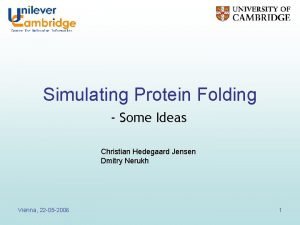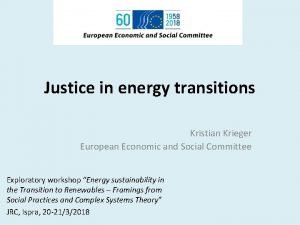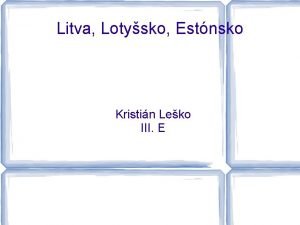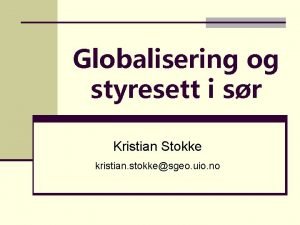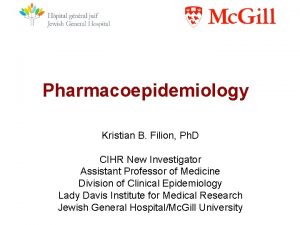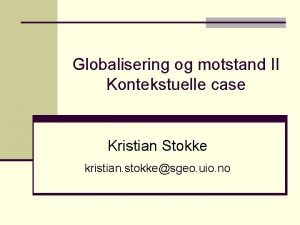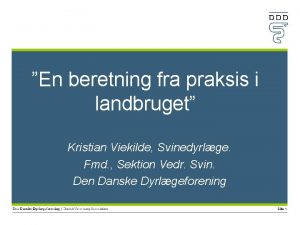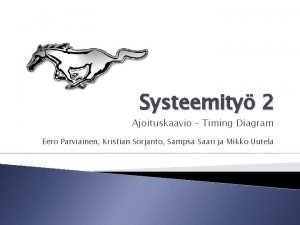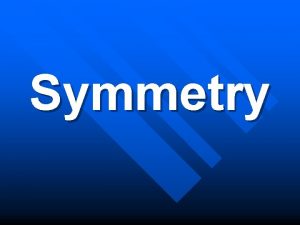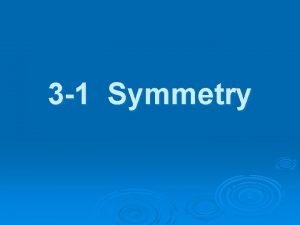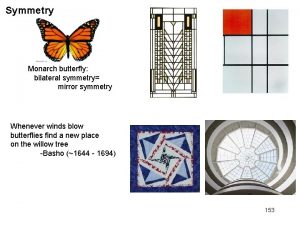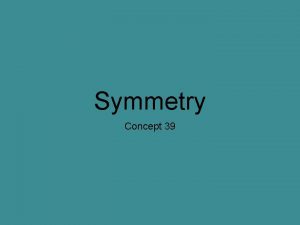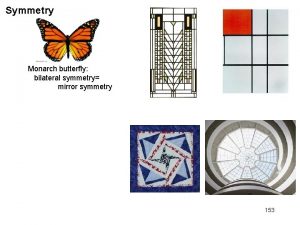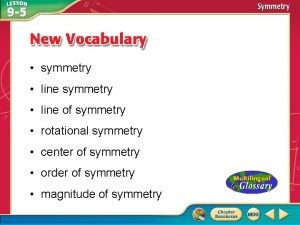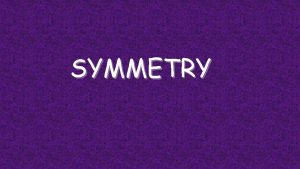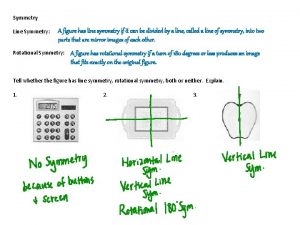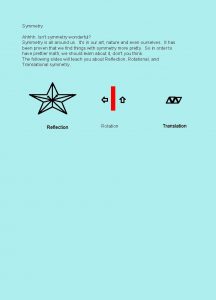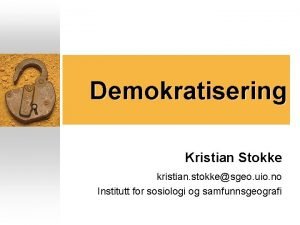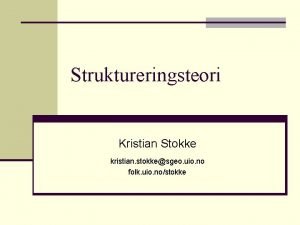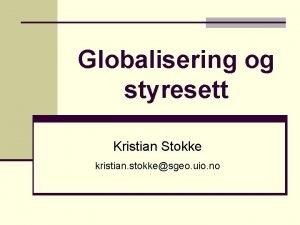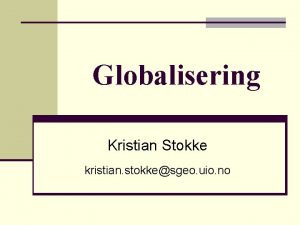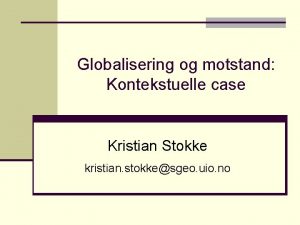QuarkLepton Symmetry In 5 D Kristian Mc Donald


















- Slides: 18

Quark-Lepton Symmetry In 5 D Kristian Mc. Donald University of Melbourne, Australia

Overview • QL symmetry is useful if you like split fermions • Quartification is less arbitrary in 5 D

Quark-Lepton Symmetry • SM is QL asymmetric • Add leptons: E = ( e, e’’) • Extend gauge group • Can define QL symmetry:

QL Symmetry In 5 D • In 5 D inherently extra dimensional techniques become available – Orbifold Compactification • Provides an alternative means to break gauge symmetries • Introduces an additional energy scale, 1/R • Mass of some gauge fields is governed by 1/R rather than a scalar VEV • Different collider phenomenology • Fermions: bulk or brane ?

Split Fermions • Introduce a singlet scalar field with a kink VEV solution. • Fermions get localised at one of the scalar kinks. L= x 5 f<0 f>0

QL Split Fermion Model • Let be odd under QL symmetry: • Thus f. L= -f. Q , fe= -fu , f = -fd and if f. Q , fu , fd >0 d Q L u e

Two scalar kinks: ‹ 2 › L= (f 1+g 2) ‹ 1 › f ‹ 1›+g ‹ 2› =20 20 ffff= == 20 20 g= =-4. 5 -5 g -4 0 -3 ggg === -1 -2 • Suppress proton decay and obtain flavour but requires 36 new parameters in SM.

QL Split Fermion Model • QL symmetry implies mu=me etc. unless quark and lepton profiles are different. • Choose 2 to be even under QL: g. Q , gu , gd >0, g. L=g. Q , ge=gu , g =gd d d u Q Q u LL e e

Grand Unification • Can we unify with leptonic colour? • Can’t use: But:

Quartification In 4 D Break: Unification requires intermediate symmetry breaking scales Can unify via a number of routes both with and without

HIGGS CONTENT • Want to have • 4 ways to go in successive stages • Eight Higgs multiplets, four gain VEVs • Intra-multiplet hierarchy

Unification achieved but… • Complicated Higgs sector: – – Large Higgs potential- lots of parameters Intra-multiplet hierarchy Arbitrary masses 7 light Higgs doublets • If we remove Higgs sector these problems disappear. How? • Place theory on an orbifold

ORBIFOLD BREAKING • Gauge fields in bulk • Under vector components have parities:

BRANE BREAKING • Scalar fields localised on brane • Define • Boundary condition • In the limit • (+, +) fields • Zero mode of (+, +)R, l are shifted up by Mc. • Higgs fields have decoupled

SU(3)q SU(2)L SU(2)l U(1)Y

GAUGE COUPLING UNIFICATION • Mc~ 4 x 1014 Ge. V, MGUT~ 4 x 1016 Ge. V Only occurs for

CONCLUSIONS • 5 D QL symmetry is useful if you like split fermions – Suppress p-decay – Address flavor • Quartification allows for QL symmetric GUT – In 4 D: multiple symmetry breaking routes, with and without remnant lepton color symmetry – Complicated Higgs sector – In 5 D: unique route which demands – Higgsless limit

Acknowledgements • Alison Demaria • Andrew Coulthurst • Ray Volkas and • Bruce Mc. Kellar from the University of Melbourne.
 Kristian frich martínez de velasco
Kristian frich martínez de velasco Kristian hedegaard jensen
Kristian hedegaard jensen Kristian krieger
Kristian krieger Lotysko
Lotysko Norway
Norway Kristian stokke uio
Kristian stokke uio Kristian filion
Kristian filion Kristian vanderwaeren wikipedia
Kristian vanderwaeren wikipedia Kristian ludlow
Kristian ludlow Kristian sandahl
Kristian sandahl Muskelarbejde
Muskelarbejde Kristian stokke
Kristian stokke Kristian bolin
Kristian bolin Kristian zahrtmann
Kristian zahrtmann Kristian viekilde
Kristian viekilde Eero parviainen
Eero parviainen Kristian frich martínez de velasco
Kristian frich martínez de velasco Debat agama
Debat agama Kristian korunić
Kristian korunić

